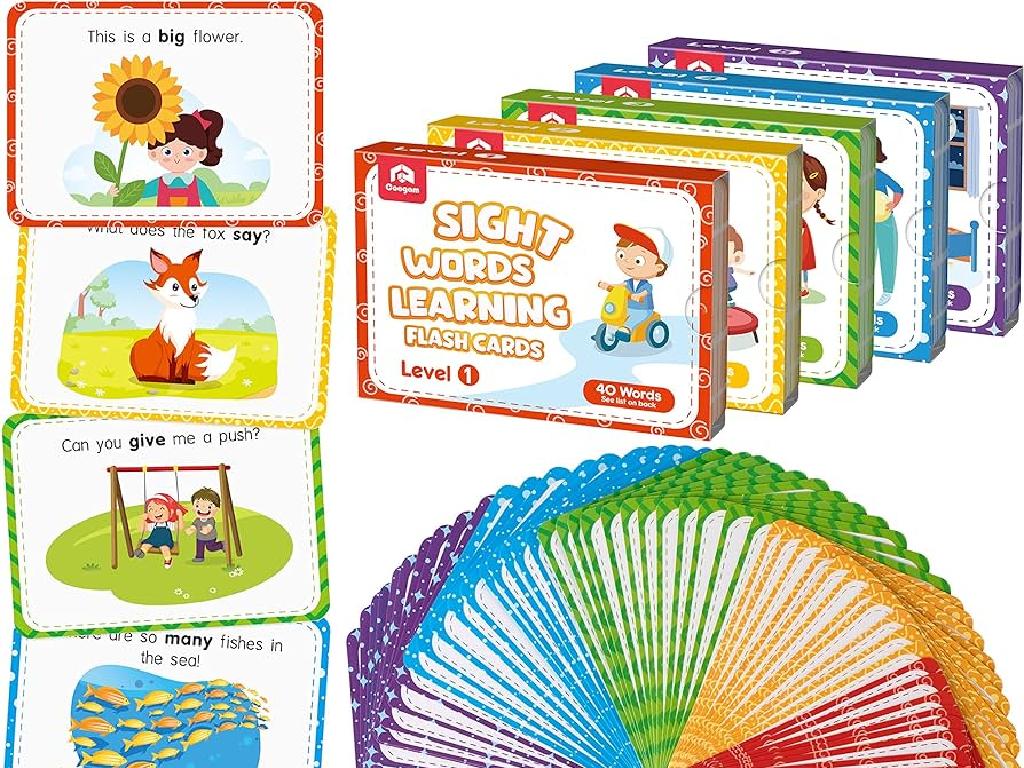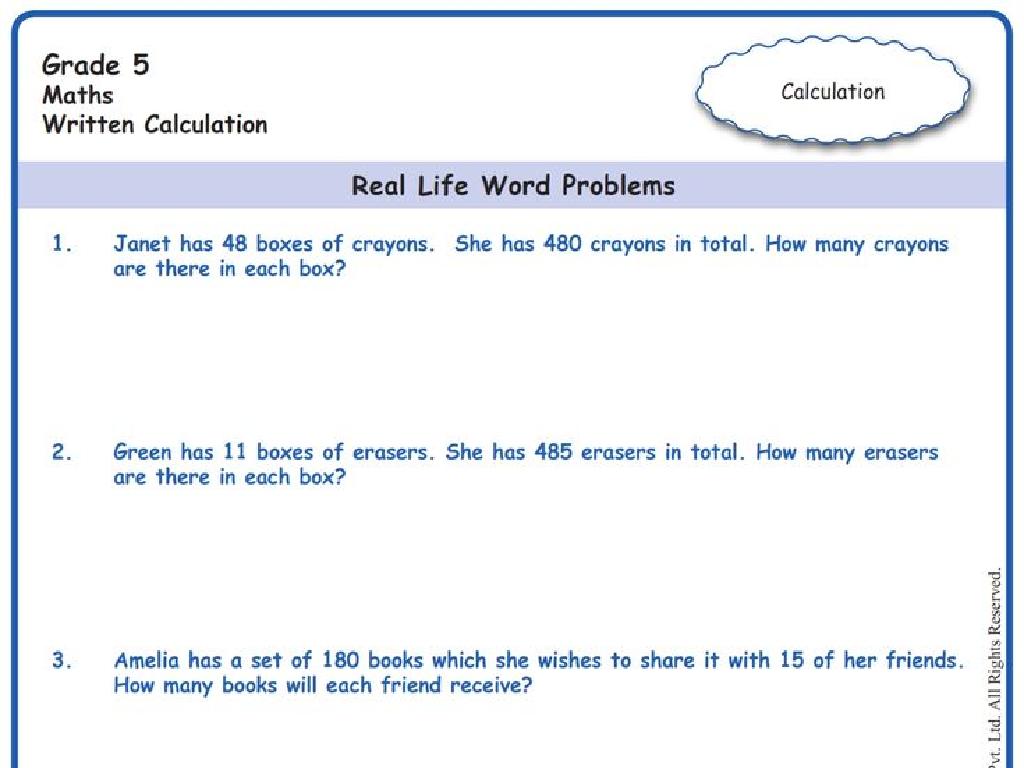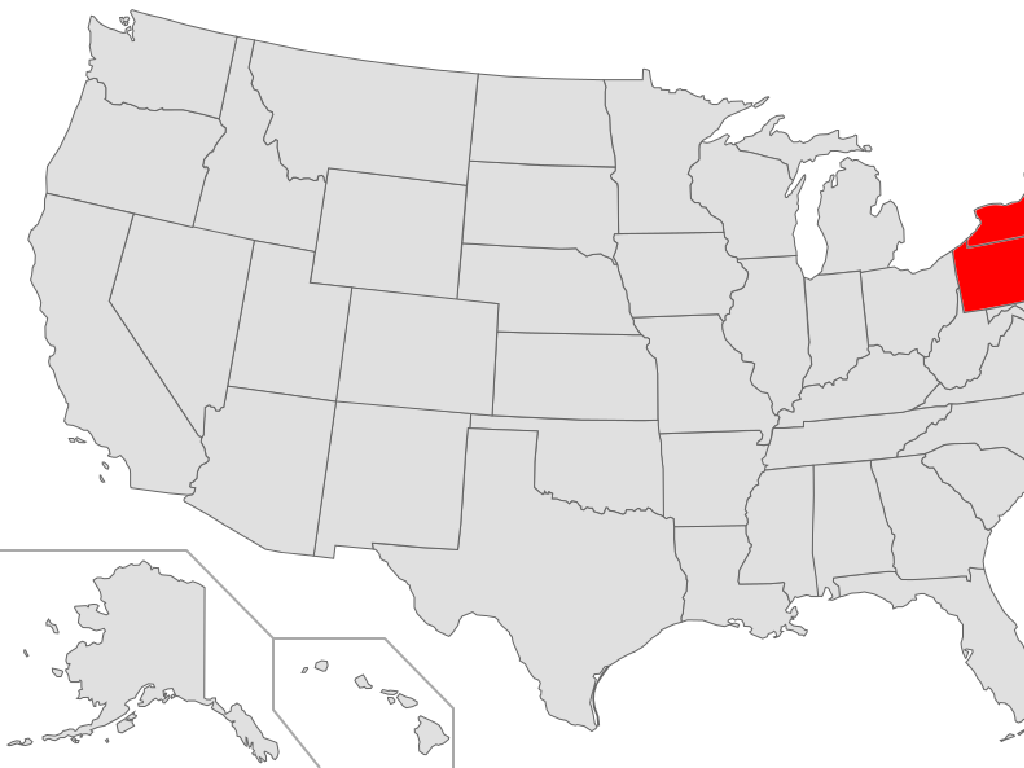Beside And Next To
Subject: Math
Grade: Pre-k
Topic: Positions
Please LOG IN to download the presentation. Access is available to registered users only.
View More Content
Exploring Positions: Beside and Next to
– Greet our young mathematicians
– Today’s focus: Learning ‘Positions’
– Understanding ‘Beside’
– ‘Beside’ means by the side of something or someone
– Grasping ‘Next to’
– ‘Next to’ is similar to ‘beside’, but can also mean immediately following in order
|
Begin the class with a warm welcome to create an engaging learning environment. Today’s lesson will introduce the concept of positions, specifically focusing on ‘beside’ and ‘next to’. Use classroom objects and students themselves to demonstrate these positions. For example, place a book beside a pencil or a student standing next to another student. Encourage the children to practice using these terms by positioning objects or themselves beside and next to various items or classmates. This hands-on approach will help solidify their understanding of these positional words.
Learning About ‘Beside’ and ‘Next To’
– ‘Beside’ means next to something
– Example: Pencil next to eraser
– Like a book beside a backpack on a shelf
– Find classroom items ‘beside’ each other
– Look around to spot objects side by side
– Understanding ‘beside’ through play
– Use toys to demonstrate ‘beside’ concept
|
This slide introduces the concept of ‘beside’ to Pre-K students, which is a foundational understanding of relative positions. Start by explaining that ‘beside’ means one thing is right next to another. Use simple, tangible examples like a pencil next to an eraser to illustrate the point. Encourage the children to look around the classroom to find and point out items that are beside each other, fostering observational skills. Finally, engage them in an activity where they place objects beside each other, such as toys or blocks, to reinforce the concept through hands-on learning. This interactive approach helps solidify their understanding of spatial relationships in a fun and engaging way.
Let’s Play a Game: Finding Pairs Beside Each Other
– Match objects beside each other
– Use cards with picture clues
– Cards will have images of items to match
– Find pairs on your table
– Look for cards that are next to one another
– Learn ‘beside’ and ‘next to’
|
This interactive game is designed to help Pre-K students understand the concepts of ‘beside’ and ‘next to’ through a fun matching activity. Provide students with sets of cards that have pictures of various objects. Instruct them to find and match the cards of objects that are placed beside each other on their tables. This will not only reinforce their understanding of positional words but also enhance their observational skills. As a teacher, walk around the classroom to assist and ensure that students are correctly identifying pairs that are beside each other. Encourage them to articulate why the objects are beside each other to further cement their comprehension of the concept.
Understanding ‘Next to’ and ‘Beside’
– ‘Next to’ means close by
– When one object is right by another
– Example: Cat next to a dog
– Imagine a cat sitting right by a dog
– Is ‘next to’ like ‘beside’?
– We’ll compare ‘next to’ and ‘beside’
– Let’s explore ‘beside’ and ‘next to’
– We’ll use pictures and objects to learn
|
This slide introduces the concept of ‘next to’ as a positional word, which is a fundamental part of spatial awareness for Pre-K students. Use tangible examples like a toy cat and dog to demonstrate the meaning of ‘next to’. Encourage the children to place objects ‘next to’ each other to grasp the concept. Discuss if ‘next to’ and ‘beside’ might mean the same thing, and use this as an opportunity to introduce ‘beside’ as another positional word. Provide clear examples and engage the students with hands-on activities to solidify their understanding of these terms.
Story Time with Timmy the Turtle!
– Listen to Timmy’s lunchtime story
– Find who sits beside Timmy
– Is it another turtle, or a different animal?
– Think about where everyone is seated
– Who is on Timmy’s left? Who is on his right?
– Ready to discuss the story after
|
This slide is designed to introduce the concepts of ‘beside’ and ‘next to’ to Pre-K students through an engaging story about Timmy the Turtle. As you read the story, emphasize the positions of the characters during lunchtime, asking the children to pay special attention to who is sitting beside Timmy. Encourage them to visualize the seating arrangement and use descriptive language to help them understand the spatial relationships. After the story, facilitate a discussion where the children can share their observations and thoughts. This will help reinforce their understanding of the positions ‘beside’ and ‘next to’ in a fun and interactive way.
Class Activity: Find Your Partner
– Stand up and find a partner
– One partner stands beside the other
– Standing side by side without touching
– Now switch positions
– Experience both positions
– Discuss how it feels
– Share feelings about the activity
|
This activity is designed to help Pre-K students understand the concepts of ‘beside’ and ‘next to’ through physical movement and social interaction. Encourage the children to stand up and find a partner in the classroom. Guide them to stand beside each other, ensuring they know they should be side by side without touching. After a moment, have them switch positions so each child experiences standing on the other side. Ask the children how it feels to stand next to someone and encourage them to share their thoughts. This will help them grasp the spatial concepts while also developing their social and verbal skills. Possible variations of the activity could include using objects to demonstrate ‘beside’ and ‘next to’, or having the children move to music and find new partners to stand beside, promoting further understanding and engagement.
Drawing Time: Beside and Next To
– Draw yourself and your best friend
– Stand beside each other in the drawing
– ‘Beside’ means standing next to someone.
– Use colors to make it vibrant
– Choose bright colors to fill in your picture.
– We’ll share our artwork with everyone
– Get ready to show your picture and tell us about it!
|
This slide is for a class activity that helps Pre-K students understand the concept of ‘beside’ and ‘next to’ through a fun and engaging drawing exercise. Encourage the children to think about what it means to stand next to someone and to use that understanding in their drawings. Provide them with a variety of colors and ask them to make their drawings bright and cheerful. Once everyone has finished, create a comfortable environment for the children to share their drawings and talk about their best friends. This activity not only teaches spatial awareness but also allows for creativity and expression.
Review: Beside and Next To
– ‘Beside’ means by the side
– Like when you sit by a friend on a bench
– ‘Next to’ means very close or touching
– Like when your crayons are touching in the box
– Show ‘beside’ with your hands
– Place one hand to the side of the other
– Show ‘next to’ with your hands
– Put your hands together side by side
|
This slide is a review of the concepts ‘beside’ and ‘next to’ for Pre-K students. Start by asking the students what they remember about the terms ‘beside’ and ‘next to’. Explain that ‘beside’ means one thing is by the side of another, not touching but close, like sitting next to a friend but not touching. ‘Next to’ means very close or right up against something, like how crayons are arranged in a box. Encourage the children to demonstrate ‘beside’ by placing one hand to the side of the other, not touching. Then, have them show ‘next to’ by putting their hands together side by side, touching. This physical activity helps reinforce the spatial concepts. Prepare to guide the children through the hand movements and correct gently if they confuse the two positions.
Goodbye and Great Job!
– Amazing work learning ‘beside’ and ‘next to’
– Let’s give ourselves a big clap!
– Practice ‘beside’ and ‘next to’ at home
– Try saying ‘The cup is beside the plate’ or ‘The toy is next to the teddy bear’
– Keep using your new words every day
|
As we conclude today’s lesson on ‘beside’ and ‘next to’, praise the children for their hard work and understanding. Encourage them to celebrate their achievement with a round of applause. Remind them to continue practicing these positional words at home, perhaps while helping set the table or tidying up their toys. Reinforcement at home will help solidify their understanding of these concepts. Encourage parents to participate in this learning by asking their child to use ‘beside’ and ‘next to’ in sentences during daily routines.





